Within the sport of mountain biking, there is perhaps no better manufacturer in terms of durability and performance dynamics than Transition Bikes. A Transition bike may not be on the tip of every mountain biker’s tongue, and it is true that transition bikes do not sell against the numbers of massively produced bike brands, but this is actually part of Transition’s appeal, and it is also a sign of superb quality. So why are Transition bikes good?
A Transition bike is of superb quality thanks to the time and commitment that Transition places in creating and manufacturing their models. A Transition bike is primarily for off-road mountain biking only, and this allows the company to focus heavily on quality as opposed to quantity.
Are you interested in possibly trying out a Transition Bike? Perhaps you are curious about the company but are also wondering if a Transition is really the right fit for you? Whatever your interests or concerns may be, this article is for you. In this comprehensive guide, we are going to take a deep dive into Transition by taking a look at the company, it’s bike manufacturing process, and reviewing a range of their most popular bike models.
What Are Transition Bikes For?
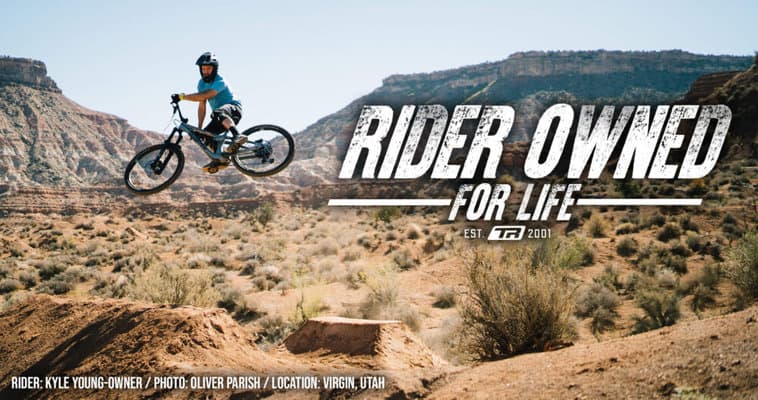
As a specialty MTB bike manufacturer, Transition bikes pride themselves on being rider owned, and maintaining a level of transparency and approach-ability even as the company grows. While working in mundane corporate jobs, Transition’s founders looked elsewhere for inspiration. They began a company called comparebikes.com (now defunct) which began as a project for people to be able to compare geometry, specs and prices of mountain bikes on the market.
This required a lot of information and Kyle Young and Kevin Menard gathered geometry information from as many bike brands as they could.
After they realized it might not be a fruitful venture, they decided to focus on starting their own bike company, a company that would remain accessible and relatable to customers no matter how much they grew.
More recently, they have moved their headquarters from Ferndale to Bellingham, WA to be closer to the trail facilities and the local riding community, rather than an hour or so away. After many models and steep manufacturing learning curves, Transition bicycles now makes bikes for every type of mountain riding, from Trail to Downhill and everything in between.
Transition bikes are a company that doesn’t orient their goals for maximum profit, they want to create bikes that people want to ride and don’t compromise on quality over a fad. All Transition bikes are made to be ridden and are built to last with specs that are designed for longevity and quality rather than fads and trends that may not last.
Transition bicycles know that their bikes are an investment and they keep the development rider led, rather than product or trend-led. With this in mind, they’ve built a collection of bikes that do it all, blurring the lines between categories. Transition MTB have developed bikes in Trail, Enduro, Jump/Freestyle, Downhill, and Cross-Country (XC) categories, but each has its own innovations that make them do-it-all bikes.
Furthermore, Transition bike dealers can be found all across the globe, making them accessible for all. Their prices are competitive but considering they make high-end bikes with carbon frames, they can be considered an investment. The Transition mountain bikes are available in a variety of builds to suit budgets, so you can choose the level of componentry you want on your bike.
Transition Bike Types: A Brief Overview

Cross-Country, or XC bikes, are typically lightweight mountain bikes with up to 130mm suspension travel. They are now more often than not full-suspension bikes, thanks to the development of lightweight components. These bikes are fantastic climbers thanks to their lightweight, and adequate on descents.
In XC racing their descents are not nearly as technical or steep as Enduro or Downhill, simply because the bikes aren’t built for that type of terrain.
XC bikes are ideal for those that want to go on long rides on less tricky terrain. Transition has one bike in their XC line-up, the Spur.
The Transition Spur blends the lines between what an XC bike should be capable of with the geometry of a far more hardy bike. Transitions offer 120mm rear and front suspension travel, and 29-inch wheels. The 29-inch wheels mean you can ride over larger obstacles more easily without needing the skill to maneuver the bike around as much.
The Spur comes with a range of SRAM groupsets and RockShox suspension components to choose from. It also comes with a dropper post which is not commonly seen on XC bikes. This lightweight bike weighs 24.7 lbs/11.2kg making it extremely lightweight. It is available in either deep sea green or black powder colourway.
Trail bikes are the sort of step between XC and Enduro bikes. Typically they have between 120mm-160mm of suspension travel, (although this is debated) and are designed to excel on fast trails.
They are full-suspension bikes but their geometry is typically not as long and slack as an Enduro mountain bike. These types of bikes are at home in trail centers, and technical trails, and unlike Downhill bikes they can climb well so you don’t need to buy an uplift ticket at the trail park.
Are Transition Bikes Good?
This will depend on your interest in their product. The relatively young company combines their fresh take on bike design with the willingness to push boundaries to create some seriously rad bikes if I do say so myself. Their Giddy Up suspension platform and their SBG (speed balanced geometry) geometry create a natural and confidence inspiring feel on the trail that has become signature to Transition bikes.
Their models seem to blend categories and defy what is normally possible on a bike of that travel or wheel size. Transition frames are made of high quality aluminum or carbon and have some brilliant engineering behind them. Transition has disrupted the bike industry with well designed bikes that come from a clever group of shredders who like to have a good time on and off the bike.
For example, take the successful GiddyUp suspension system, add one part increased pedaling efficiency, two parts wider sag range, and three parts increased small bump sensitivity, and you get GiddyUp. It has a truly incredible pedaling performance balanced with a superb neutral, comfortable and fun feel that the company is known for.
GiddyUp is extremely easy to set up and it provides excellent support throughout the entire stroke of the shock so you can use all your travel without worrying about bottoming out. Designed to be active while climbing, rear shock climbing platforms are not necessary. The suspension remains free to smooth out the trail, improve traction and control without sacrificing efficiency.
With GiddyUp you can focus on the trail, no remotes, levers or knobs. Just grab your bike and well, you know–GiddyUp.
SBG ensures the bike maintains low speed agility, front wheel traction, and proper rider weight balance while actually increasing confidence in steep terrain and at high speeds. With SBG, a slacker head tube angle is combined with an all new reduced offset fork standard, preventing the front wheel from being too far in front of the rider. This improves front to rear weight distribution on the bike, which is often out of balance on long and slack bikes.
One of SBG’s greatest benefits is that it creates a confident steering feel that adapts to wheel speed. More stability when going fast, more agility on technical slow speed maneuvering as well as improved traction, control and confidence for any skill level of rider. Let’s face it, these bikes are meant to be piloted up or down anything but the most casual trails.
Transition Design Overview
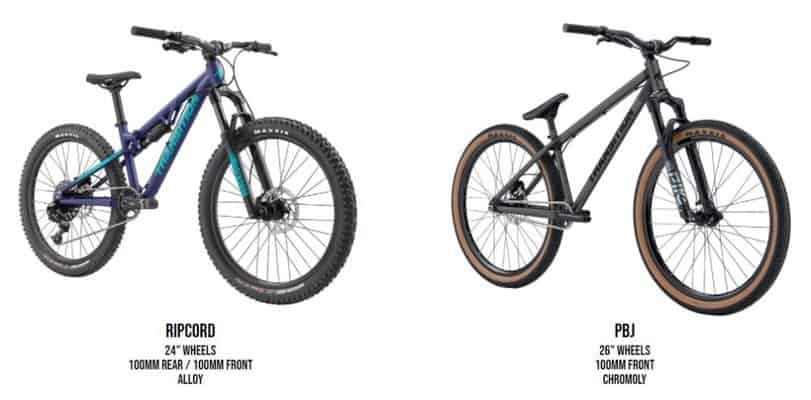
Transition designs their bikes with the intention of aggressive riding, gnarly trails, and exciting rides. For the riders who may think that sounds intimidating, well no worries, Transition’s bikes give the rider the utmost confidence, so you can work your way up the sending scale without doubt in the bike’s capabilities.
On the other hand, if that kind of riding sounds right up your alley, well good news, you’re going to have a ridiculous amount of fun aboard a Transition.
Transition Bike Company Overview
In an attempt to eliminate the barrier to entry for traditionally budget-conscious core riders, Transition offers their own in-house brand of components built for the rigors of abusive riding. And product support doesn’t end at the checkout stand. There are no auto-generated email responses with them which I find to be refreshing.
Customer support is a priority, with lifetime crash replacement offered on all frames because riders know things happen and eventually something’s got to give. To keep things zesty, Transition offers multiple paint options and a decal kit with each frame to customize the look of the bike and offer a sense of individuality. Original themes like a Pabst Blue Ribbon paint job pumps up the fun.
Employment Options
Transition now employs a team of eight seasoned riders from all facets of the sport to handle the various chores of running the business. While there’s no company documentation requiring employees to ride, it’s pretty much impossible not to, with the encouragement of such a tight crew.
A quick background check would reveal multiple types of riding experience within the company, from cross-country and road riding, to dirt jumping, street sessions, downhill racing, and big mountain hucking. It’s the ultimate in product testing to have such an assortment of enthusiastic talent actually running the company. There’s an impressive sponsor roster complimenting the in-house team of riders as well.
In fact, the company’s original sponsored rider, Mike Metzger, is now one of its full-time employees and manages sponsorship for the company, while pro racer Lars Sternberg helms their newly minted race team. All of this helps to amp up the passion in the company for progression in riding and in designing the ultimate bikes.
While a Transition bike may not be the best fit for every rider out there, it’s good to know that there are rider-owned companies like Transition deeply rooted in, and dedicated to, the advancement of the sport. These guys are in it for the long haul and want to share the stroke of mountain biking with anyone who wants to ride.
They look to help out riders any way they can when it comes to issues with their bikes. They’re always just one email or phone call away, sometimes you just can’t find that with larger brands. Their bikes ride great, are well designed, and originate from a small group of passionate riders. They’re all about having fun, dismissing the status quo, and making riders happy.
Just like the pacific northwest, their bikes suit the terrain and style of riding found around there very well. The fact that their bikes are easy to work on and super reliable, well that’s just a bonus. I personally love how Transition bikes ride and so do many other MTB enthusiasts. This is why I have become a huge fan of Transition’s bikes. Simply put, Transition bikes are unlike any other brand out there, and that’s exactly why many people love them.
Where Are Transition Bikes Made?
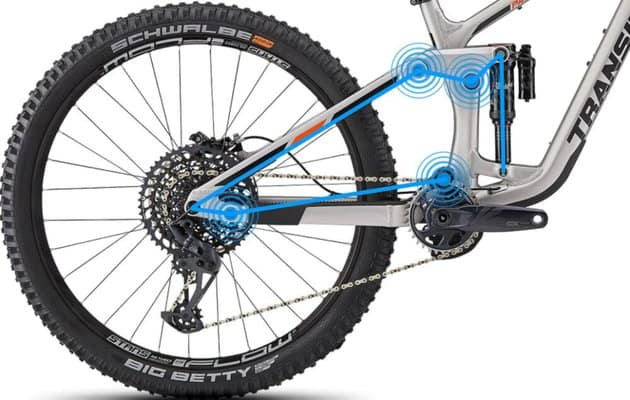
Many of you might have heard about the GiddyUp suspension when it comes to mountain bikes in general and Transition bikes in general. The GiddyUp suspension is typically designed to make it easier to experience excellent rear suspension performance. Basically, the GiddyUp suspension system is created to work intuitively on a wide variety of setups.
For example, with a nearly 24% improvement and the latest innovation of the GiddyUp suspension, the Patrol (more on this model below) offers a perfect balance of support and little impact sensitivity. In addition, the anti-squat is adjusted to improve pedaling performance and offers a platform for push-ups when pumping. The best thing about it should be your excellent riding experience without compromising on the bottomless feel when necessary.
Transition adjusts the layout of the GiddyUp suspension to make sure it works properly with both air and coil rear shock absorbers. This allows riders to add or eliminate volume buffers on the rear air suspension to fit their own riding style. It also gives you a lot of control from the bottom up with coil shocks or air when things get noisy.
When using 205 mm x 60 mm travel shock absorbers, the Patrol offers 160mm rear wheel travel. However, a longer travel shock absorber, 205mm x 65mm, can also be fitted to enhance the rear wheel travel to 170mm if you want to experience longer travel.
When it comes to the performance of Transition bikes, the innovative Speed Balanced Geometry plays an important role. It allows the bike to keep agility at a low speed. What’s more, it offers better front wheel traction and the right weight balance for riders. At the same time, you can feel more confident while pedaling up hills at high speeds.
You will also not feel too far when it comes to the distance between the front of you and the front wheel. This, as a result, will enhance the weight distribution from front to back on the bicycle. One of the biggest advantages of Speed Balanced Geometry is that it makes you feel confident when it comes to steering. More stability at high speeds, more agility at slow speeds, and improved grip, control, and confidence for riders of all skill levels.
Transition bikes are designed and manufactured with durability in mind, rather than trends and appearance. Transition knows that every bike they offer is a worthy investment that keeps their riders developed in skills rather than being led by trends. Taking this into account, the company has produced a great collection of bikes that can do it all. This actually blurs the line between bike range.
The brand has developed different bikes in the mountain bike category. However, each model has its own features and innovations, making it a do-it-all bike.
Who Owns Transition Bikes?
As mentioned, the Transition bicycle company was founded by Kevin Menard and Kyle Young. The founders established the company in 2001 in Washington State.
One of the greatest things that Transition always prides themselves on is the “rider-owned” bike company. What’s more, Transition maintains a level of transparency and accessibility even when the company develops.
Transition has moved their headquarters to Bellingham so that they can be closer to the local bike riding community as well as trail facilities, instead of being more than an hour away as when located in Ferndale.
After a lot of different models and manufacturing processes, Transition Bicycles now produces bicycles for any type of mountain riding, from downhill to trail or anything in between. In fact, Transition is not a kind of company that aims to maximize profits. Instead, they would love to make bikes that everyone wants to ride and don’t satisfy quality over fashion.
Transition Bikes Warranty
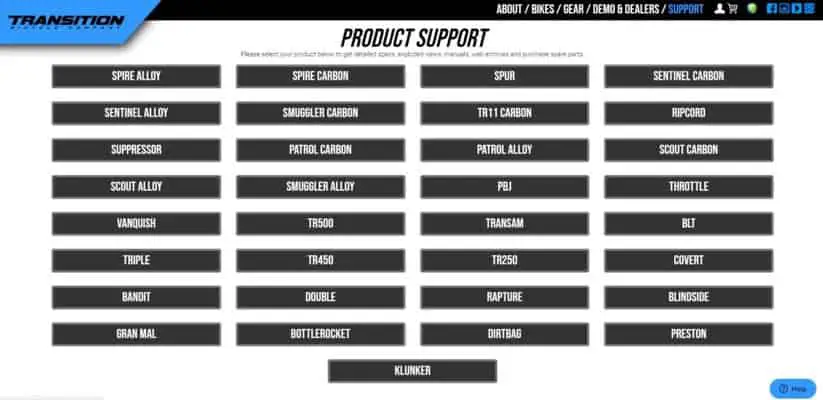
At Transition Bikes the company takes pride in the quality of their products. Their frames are manufactured to withstand the rigors and abuse modern mountain bike trails can dish out. That said, anything can break given just the right amount of time, wear, or misfortune. Everyone at Transition Bikes is committed to keeping you riding and they realize every warranty and or crash replacement situation is unique.
It is therefore their top priority to get you up and running as quickly as possible with a fair and honest solution regardless of the situation.
To view your bike’s specific warranty policy please visit their support page and select your model and version/year.
These policies apply to the original owner only. Transition Bikes will repair or replace any original purchaser’s individual frame parts or complete frame at our discretion.
You must register your frame on their site with your serial number and provide proof of purchase to qualify for a warranty. In the event of an issue with your frame, Transition Bikes will determine whether it qualifies as a ‘Warranty Issue’ or is covered under their ‘Crash Replacement Policy’.
In the event that you have to send back all or part of your frame under warranty, you are responsible for the shipping costs to get it to them and they will pay the return shipping.
The company’s warranty policy does not cover:
- Any labor costs associated with the warranty claim.
- Modifications from stock configuration.
- Normal wear-and-tear damage.
- Paint damage caused by the removal of protective tapes or adhesives.
In addition to their warranty, all Transition Bikes frames are covered for life under their “Crash Replacement Policy” to the original or second hand owner. If for any reason you should find yourself with a damaged frame, you may send them the broken frame section and they will replace it for the best possible price they can–assuming they have the replacement part available.
If they do not have the piece available, they will attempt to work out a crash replacement price on a replacement frame set. You would be responsible for all shipping costs to get the frame to and from Transition Bikes.
This completely constitutes the company’s official stance on warranties, which I have covered here since to some degree these things need to be spelled out for easier clarity. But Transition’s entire philosophy is based around being a rider-owned company, and they take that seriously. The company is well aware that not every circumstance can be accounted for and not every case falls neatly into one of the above categories, which is something I have always admired about them.
Transition looks at every warranty and crash replacement case with a fresh lens and treats every situation in the manner in which they would expect it to be handled. Their goal is to leave no rider who supports them without support in return.
Transition Frame
Transition is possibly best known for its innovative and durable frames. Being one of the longest standing issues with MTB bikes, Transition is one company that has sought to fix this problem once and for all. Their bikes feature updated geometry to accommodate the 29-inch front / 27.5-inch rear wheels on base models, and revised suspension tune-ups might just make you ride all day, and then all night.
Jibbing, jumping, pumping and hooting your way down the trail, Transition’s frames are sure to maintain long-lasting durability no matter the model. From bike parks to your local trails, a frame on a Transition isn’t concerned with where you ride but rather how much fun you are having.
Some important things to keep in mind to keep your Transition’s frame in top working order include:
- Change the attitude of the bike with a simple flip of a chip. The high and low settings give you two very usable geo settings to suit your riding style.
- Two size specific chainstay lengths are in place to provide balanced handling and rider weight distribution across the range of sizes.
- The underside top-tube accessory mount allows you to carry a spare tube or other goodies safely on your frame in case you are looking to ditch your backpack.
- Transition frames are fully dual crown compatible for those wanting to dip their toes in the Downhill world.
- Transition frames feature a SRAM Universal Derailleur Hanger that protects your derailleur against chain jams by pivoting back and out of the way, and slips slightly when encountering impacts. It improves shifting performance, guarantees better alignment, works with all drivetrains and is available anywhere.
Transition Hardtail
Transition has a long history offering well-received hardtails all the way back to when 26-inch wheels were the cream of the crop. In 2017, the company set out to create the ultimate hardtail, one that combines the playfulness of a dirt jumper and the stability of an aggressive trail bike. To achieve the desired ride quality of a brawler hardtail, the company uses carbon fiber in lieu of the typical aluminum to help fine-tune the ride characteristics.
A successful Transition hardtail is able to stand in the ring absorbing considerable amounts of punishment. To meet these rugged demands, the throttle is laid up to meet the same test standards as a 160 mm travel enduro-type bike, so the frame is more than stout enough for anything you would want to do on a hardtail.
And, if your shred-i-ness does happen to exceed that threshold, Transition offers lifetime crash replacement for its frames on top of a 3-year warranty program.
Unlike most MTB bikes, the throttle’s ability to absorb punishment is not it’s only asset. The throttle is well-balanced and light on its feet. With a little gumption on the pedals and a slight flick of the wrist, the throttle accelerates like a featherweight through tight and twisty singletrack. Even up short, rooted, pitchy 20 percent grades, the throttle remains firmly planted with a climbing prowess that even some cross-country bikes can’t match.
Getting into the depths of the hows and whys would require a trigonometry textbook to be honest, or just trust that the engineers at Transition know a thing or two about how a bike should ride.
Transition Sentinel Review
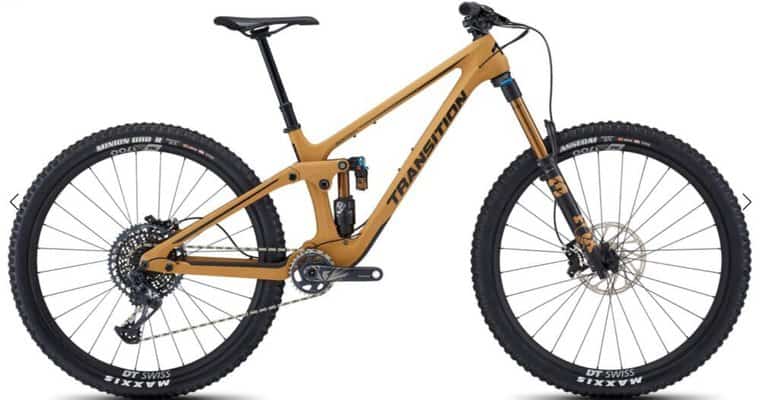
The Transition Sentinel is one the brand’s most popular models. While the Sentinel has a 63.6-degree head tube angle, it has a steep 76.4-degree seat tube in the XL model. The reach is long and roomy at 501mm, and the chainstays are a moderate 440mm. Put those numbers together and you’re left with a 1292mm wheelbase, which is long no doubt, but keep in mind we’re seeing some XLs over 1300mm these days.
The numbers that seem to throw most folks off with the Sentinel are the travel lengths — 150mm rear and 160m front. Most people just assume it’s 2495mm front and back — or so it seems. I believe the travel numbers combined with the slack geo are what make this bike so unique. The Transition Sentinel applies that same idea in a slightly longer travel package. Take that Tallboy, Optic, or Spur, and shift it up the burly scale a few notches.
The Sentinel has less travel than most other bikes with a 63.6-degree head tube angle. The long and stable geometry has your back when you run out of talent, but the shorter travel keeps it fun, lively, and engaging. Let’s start with the hard part — going uphill (I know right). The Sentinel plants itself right in the middle of the pack. It’s not the fastest climber, but it’s also far from the worst.
It doesn’t feel overly excited to get to the top of the hill. To be fair, I rarely feel that way myself. It doesn’t feel like it’s holding you back, though. It just does the job without making too much fuss.
The climbing position is rather comfortable and upright. Some users report that it does take a little bit to get used to the super slack front end. The front wheel is way out in front of you and tends to have a mind of its own when the trail gets steep.
It takes a bit of wrestling on steep switchbacks to keep it going where you want it to go. The suspension platform finds a sweet spot between efficient and grippy. It feels a lot like a Santa Cruz Hightower in this department. It’s a little more active than some other platforms, but the traction and control on bumpy climbs are second to none.
After some tuning, you can possibly land on exactly 29.979% sag. At that sag, the suspension platform strikes a good balance between comfort and efficiency.
I think the Sentinel is far more well-rounded than most folks assume or give it credit for. I’d plop it right in the all-mountain category. Sure, it’s probably the most aggressive all-mountain bike you can buy, but I don’t feel like it’s too much. I’d easily categorize it with the Hightower, Ripmo, SB130 LR, and Norco Sight. I don’t think it fits in with the enduro-specific bikes — It’s far more lively and playful.
So, the Sentinel is the perfect bike for people who fancy themselves trail riders. I’d say it leans more to the aggressive DH side than the Ripmo and Hightower, but not by much. It’s happy enough on smoother trails, even though it craves rough and rocky. What I’m saying here is it’s a good option for anything you can throw at it.
If you want to climb the fastest, look elsewhere. If you want to get to the top, turn around, and have an absolute blast on whatever trail you take to the bottom (easy or hard), look no further.
Is The Transition Sentinel A Trail Bike?
Yes, it can be. To help accommodate long-travel droppers, it’s also increased the seatpost insertion depth. This makes it possible for the small-sized bike to come standard with a 150mm dropper, while the medium has a 180mm post and the large, extra-large and extra-extra-large bikes have 210mm posts.
For example, the 2020 Sentinel features Transition’s lifetime warranty, although this was only available to the first owner of the bike.But the 148mm Boost rear axle spacing, a threaded bottom bracket and, in a bold but fantastic move, the external rear brake hose routing, help to keep it leveled. This means swapping brakes, changing damaged hoses or bleeding them is considerably easier.
It’s got a water bottle mount on the inside of the front triangle and an additional mount on the underside of the top tube, although a standard size and shaped bottle won’t fit on the second set of mounts because it will foul the shock’s piggyback.
The new Sentinel’s geometry is truly at the sharp end of modern for a trail bike.
That means you may be delighted to see steep seat-tube angles across the bike’s sizes, long reach figures and a meaty wheelbase. Add to the mix a 63.6-degree head tube angle and low bottom bracket and there’s no denying this bike’s got an appetite for amazing riding out on the trail.
How Much Travel Does a Transition Sentinel Have?
The Transition Sentinel looks very promising just standing there, but it does okay with travel. Its low-slung frame suggests that this bike likes to get rowdy. You get 150 mm travel at the rear paired with 160 mm travel up front. Like its predecessor, the new 2021 Sentinel rolls on 29-inch wheels, but the new design looks a lot more futuristic with clean, straight lines and sharp angles.
The rear suspension relies on a classic horst-link. The details of the frame make it clear that the boys and girls from Transition are riders themselves. The brake line is routed externally for easier assembly and the bottom bracket relies on the threaded BSA standard. With bosses on the top tube, you’ve also got on-bike storage options for a spare tube or tools.
A particular highlight for many is the short and straight seat tube, allowing for a whopping 210 mm travel dropper post. Since Transition obviously knew about the rattling Shimano pads, many Sentinel bikes come equipped with regular pads that don’t have the cooling fins. Unfortunately, many riders still encounter an annoying rattle during their first ride, caused by the cables inside the frame, but that’s a small inconvenience.
The Shimano XT drivetrain and brakes are proven performers. Without the cooling fins, the pads don’t rattle, and the bite points were consistent on these models. The suspension consists of a FOX 36 Performance fork (without GRIP2) and an X2 air shock of the same range. Stan’s NoTubes ZTR Flow S1 rims match the quality of the remaining components.
So what is the best travel highlight? The 210 mm OneUp dropper post ensures maximum freedom of movement on the bike. The EXO+ casing on the MAXXIS tire combination is good for all-round use. However, if you want to let rip, you’d better switch to Doubledown models.
Transition Patrol
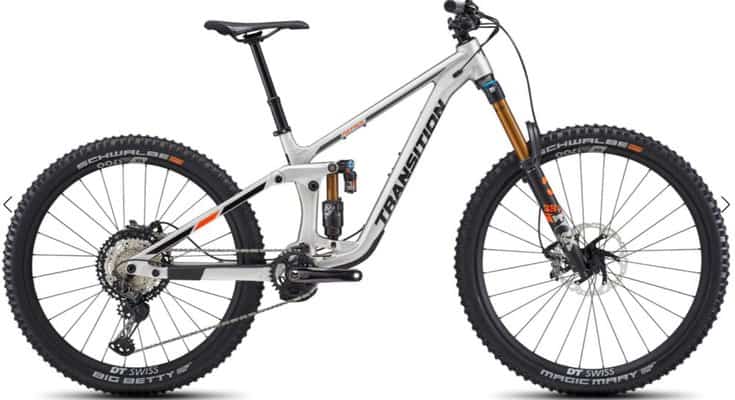
The Patrol has been in Transition’s lineup since 2015, first appearing as a 155 mm rear / 160 mm front travel Enduro bike with 27.5-inch wheels, but Transition’s firm commitment to maintaining a firm level of superior innovation with the Patrol series is firmly on display. It’s clear that they intend the Patrol to be a playful, fun bike, rather than some game-on-race bike that’s only at home going a million miles an hour.
That said, it also looks like quite a bit of bike, with 160 mm of travel and both ends and quite long / low / slack geometry. Transition’s description of the 2021 Patrol makes its intentions clear: “Jibbing, jumping, pumping, and hooting your way down the trail, the updated Patrol loves to party. From bike parks to your local trails, the Patrol isn’t concerned with where you ride, but rather how much fun you are having.”
The outgoing Patrol was available in both aluminum and carbon frames, but the new model is offered in aluminum only — a sensible-seeming choice for a bike that’s meant to be a fun, burly freeride bike more than a speed-obsessed Enduro racer.
Despite the material change from the last few bikes Transition has rolled out — the Scout, Sentinel, and Spur are all available in carbon only — the overall lines and aesthetics of the Patrol share a strong family resemblance. The familiar Horst link suspension with a vertically oriented shock carries over, now with roughly 24% total progression — far more than the outgoing Patrol.
Rubber guards for the seatstay, chainstay, and downtube come pre-installed, and an additional “shuttle guard” is included in the box. Cable routing is fully internal, a full-size water bottle fits inside the front triangle on all sizes, and there’s a second set of accessory mounts underneath the top tube.
The Patrol also features a flip chip at the lower shock mount to toggle between two geometry settings but it’s not meant to adjust for wheel size — the new Patrol is a mullet through and through. And while the Patrol comes with a 205 x 60 mm trunnion-mount shock, yielding 160 mm of rear travel, it’s possible to use a 205 x 65 mm shock to bump things up to 170 mm in the back.
Patrol Features
One interesting feature of the new Patrol is that the headtube isn’t tapered. Instead, the Patrol uses 56mm-diameter headset cups at the top and bottom to make more room for reach-adjust headsets, particularly when using a dual-crown fork with a straight 1.125-inch steerer tube. And yep, the Patrol is rated to be used with a dual-crown if you want to get really rowdy — a bit of a rarity for a non-DH bike these days, and an option that I’m glad to see available.
As has been the case with all of Transition’s frames since the updated Scout rolled out in 2020, the Patrol gets a lifetime warranty on the frame for the original owner.
Transition offers the new Patrol as a frame kit with a Fox Float X2 Factory shock and FSA headset, or as one of three complete builds. These builds all seem nicely in keeping with the intentions of the bike. Both the SRAM GX and Shimano XT builds get top-tier suspension (RockShox ZEB Ultimate / Super Deluxe Ultimate and Fox 38 Factory / X2 Factory, respectively) and solid, but not full-bling drivetrains and wheels.
It’s also worth noting that all three come with 165 mm cranks and OneUp bash guards and dropper posts — it’s a burley bike with a clear descending focus.
Transition was an early adopter of long / low / slack new-school geometry (“Speed Balanced Geometry,” in their parlance) and the new Patrol gets even more slack, in particular, compared to the outgoing model.
Patrol Specs
The outgoing bike (2020) had a 64-degree headtube angle across the board. The new model drops that to 63.5 degrees in the “high” geometry setting, and 63 degrees in the “low” one. Reach has actually remained about the same between the two generations, but unfortunately, the XS size from the old bike is no more.
The size Small starts at a 415 mm reach, and that figure grows to 440 mm on the Medium, 475 mm on the Large, and 505 mm for the XL — all in the low geometry setting. The high option stretches the reach by 5 mm in all sizes.
The seat tube angle has steepened by about a degree across the board, and Transition is now joining the club of companies varying chainstay length by size, with the Small and Medium Patrols getting 436 mm stays, which grow to 442 mm for the Large and XL (again in the low setting).
The Patrol features a frame made from tough and dependable 6061 aluminum to strike the right balance of frame strength, durability and ride quality. All frames see protection on the downtube, chainstay, and seatstay, with an optional downtube shuttle guard included in the box. Small and medium sizes share 434mm chainstay lengths while large and x-large share 440mm chainstay lengths.
All frames are equipped with a geo-adjust chip at the lower shock mount for high and low geometry settings, and 56mm/56mm press in headset cups that are compatible with reach-adjust headsets when used with a dual crown fork.
Should You Get a Transition Bike?
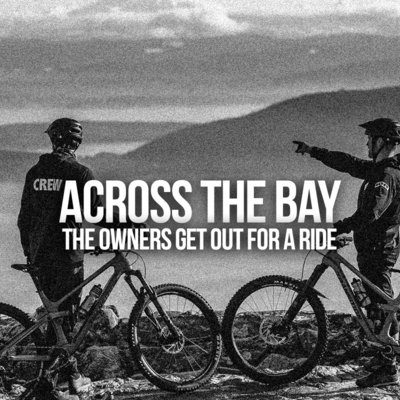
Transition has been something of a cult brand over the years. They’re a rider-owned company who design bikes that are a bit different to the norm. They don’t make wacky or weird bikes. They make bikes that make sense to experienced riders. Sure, they like to have fun, but they take their fun very seriously.
They don’t make dozens of different models. They don’t generally ‘do’ model years; they bring out a new model, or revise an existing model, as and when they think it’s needed. They aren’t luddites. Far from it. They’re pioneering designers but in a grounded, what-riders-want kinda way.
The designers are all real world riders themselves – and pretty darned good riders – and they design bikes that are capable of being ridden hard and rough without rattling to pieces. Their local trails in Washington State, USA are full of rocks, roots and muck, and they design the bikes to survive and thrive there. Big pivots, big tire clearance, decent paint jobs. There is nothing not to like with a Transition bike.
